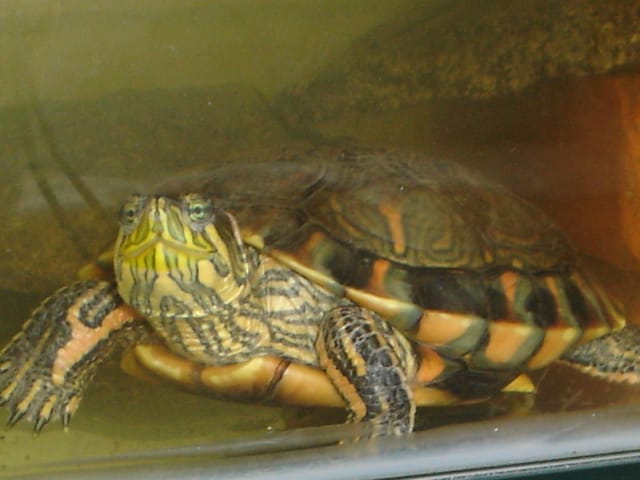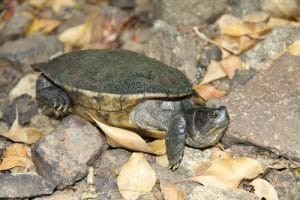Trachemys dorbigni (D’Orbigny’s slider)
Home > Turtle Database > Trachemys dorbigni (D’Orbigny’s slider)
The D’Orbigny’s slider, Trachemys dorbigni, is a freshwater turtle native to parts of South America. It’s known for its bright facial markings and strong swimming skills, often found basking in the sun or gliding through rivers and ponds.
Native Turtle Species Map – Find Turtles by Region
Scientific Classification
Kingdom: Animalia
Phylum: Chordata
Class: Reptilia
Order: Testudines
Family: Emydidae
Genus: Trachemys
Species: Trachemys dorbigni
Common Names
D’Orbigny’s slider
black-bellied slider
This Hilarious Turtle Book Might Know Your Pet Better Than You Do
Let’s be real—most turtle care guides feel like reading a textbook written by a sleep-deprived zookeeper.
This one’s not that.
Told from the snarky point of view of a grumpy, judgmental turtle, 21 Turtle Truths You’ll Never Read in a Care Guide is packed with sarcasm, sass, and surprisingly useful insights.
And hey—you don’t have to commit to the whole thing just yet.
Grab 2 free truths from the ebook and get a taste of what your turtle really thinks about your setup, your food choices, and that weird plastic palm tree.
It’s funny, it’s honest, and if you’ve ever owned a turtle who glares at you like you’re the problem—you’ll feel seen.
Identification
Description
The D’Orbigny’s slider has an olive to dark brown shell with yellowish markings. Its skin is dark green with bold yellow stripes on the face, neck, and legs. The carapace is oval and slightly flattened, and the plastron is usually yellow with dark blotches.
Sexual Dimorphism
Males are smaller than females and have longer front claws and tails. Females tend to have broader shells and shorter, thicker tails.
Check more turtles from the Trachemys genus
Native Origin and Distribution
Geographical Range
This species is native to southern Brazil, Uruguay, northeastern Argentina, and parts of Paraguay. It’s commonly found in the Paraná, Uruguay, and São Francisco River basins.
Preferred Habitat
D’Orbigny’s sliders prefer calm freshwater habitats like rivers, lakes, ponds, and marshes. They need spots for basking, such as logs or rocks, and areas with soft, muddy bottoms.
Behavior
Feeding Habits
They are omnivores. Young turtles eat more meat like insects, small fish, and carrion, while adults shift to a more plant-based diet, including aquatic vegetation and algae.
Predators
Eggs and hatchlings are preyed on by birds, fish, raccoons, and other reptiles. Adults face fewer threats but can still be attacked by large birds or mammals.
Reproduction
Breeding Season
Breeding usually happens during the warmer months, from spring through summer.
Reproductive Method
Females lay eggs on land, digging nests in sandy or soft soil. A single clutch may have 6 to 20 eggs, and multiple clutches can be laid in a season.
Conservation
Extinction Status: not evaluated
Threats
Habitat destruction, pollution, collection for the pet trade, and competition with invasive species threaten this turtle’s survival.
Conservation Measures
Some regions have regulations on pet trade and habitat protection. Awareness programs are helping reduce illegal capture and promote conservation.
Economic Importance
This turtle is popular in the pet trade due to its size and colorful appearance. In some regions, it’s used in local traditional practices. It also plays a role in controlling pests by feeding on insects and detritus.
Interesting Facts
D’Orbigny’s sliders can hold their breath underwater for a long time—sometimes over 30 minutes.
They’re strong swimmers and can adapt well to man-made water bodies like reservoirs and canals.
The species was named after Alcide d’Orbigny, a French naturalist who explored South America in the 1800s.

About Author
Muntaseer Rahman started keeping pet turtles back in 2013. He also owns the largest Turtle & Tortoise Facebook community in Bangladesh. These days he is mostly active on Facebook.















